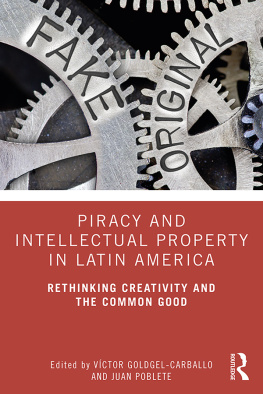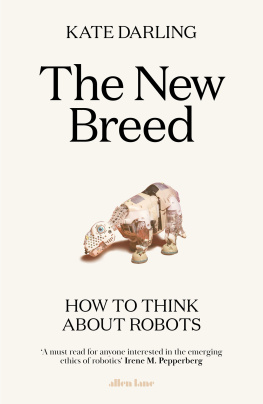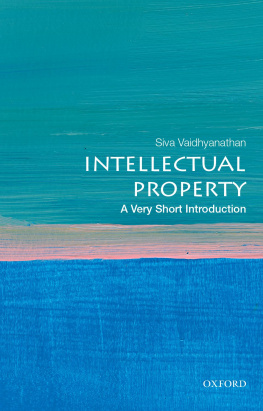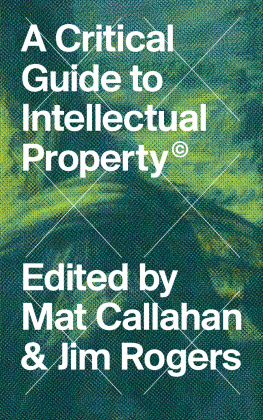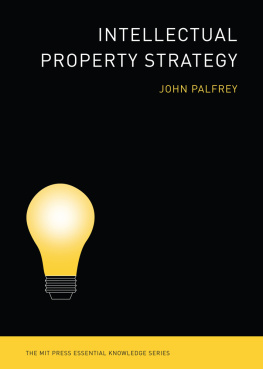Darling Kate - Creativity without law: challenging the assumptions of intellectual property
Here you can read online Darling Kate - Creativity without law: challenging the assumptions of intellectual property full text of the book (entire story) in english for free. Download pdf and epub, get meaning, cover and reviews about this ebook. City: New York, year: 2017, publisher: University Press, genre: Politics. Description of the work, (preface) as well as reviews are available. Best literature library LitArk.com created for fans of good reading and offers a wide selection of genres:
Romance novel
Science fiction
Adventure
Detective
Science
History
Home and family
Prose
Art
Politics
Computer
Non-fiction
Religion
Business
Children
Humor
Choose a favorite category and find really read worthwhile books. Enjoy immersion in the world of imagination, feel the emotions of the characters or learn something new for yourself, make an fascinating discovery.

- Book:Creativity without law: challenging the assumptions of intellectual property
- Author:
- Publisher:University Press
- Genre:
- Year:2017
- City:New York
- Rating:5 / 5
- Favourites:Add to favourites
- Your mark:
- 100
- 1
- 2
- 3
- 4
- 5
Creativity without law: challenging the assumptions of intellectual property: summary, description and annotation
We offer to read an annotation, description, summary or preface (depends on what the author of the book "Creativity without law: challenging the assumptions of intellectual property" wrote himself). If you haven't found the necessary information about the book — write in the comments, we will try to find it.
Darling Kate: author's other books
Who wrote Creativity without law: challenging the assumptions of intellectual property? Find out the surname, the name of the author of the book and a list of all author's works by series.
Creativity without law: challenging the assumptions of intellectual property — read online for free the complete book (whole text) full work
Below is the text of the book, divided by pages. System saving the place of the last page read, allows you to conveniently read the book "Creativity without law: challenging the assumptions of intellectual property" online for free, without having to search again every time where you left off. Put a bookmark, and you can go to the page where you finished reading at any time.
Font size:
Interval:
Bookmark:
Edited by Kate Darling and Aaron Perzanowski

NEW YORK UNIVERSITY PRESS
New York
NEW YORK UNIVERSITY PRESS
New York
www.nyupress.org
2017 by New York University
All rights reserved
References to Internet websites (URLs) were accurate at the time of writing. Neither the author nor New York University Press is responsible for URLs that may have expired or changed since the manuscript was prepared.
ISBN : 978-1-4798-4193-6 (hardback)
ISBN : 978-1-4798-5624-4 (paperback)
For Library of Congress Cataloging-in-Publication data, please contact the Library of Congress.
New York University Press books are printed on acid-free paper, and their binding materials are chosen for strength and durability. We strive to use environmentally responsible suppliers and materials to the greatest extent possible in publishing our books.
Manufactured in the United States of America
10 9 8 7 6 5 4 3 2 1
Also available as an ebook
Aaron Perzanowski and Kate Darling
Emmanuelle Fauchart and Eric von Hippel
Matthew Schruers
Katherine J. Strandburg
Aaron Perzanowski
Marta Iljadica
David Fagundes
Rebecca Tushnet
Kate Darling
Olufunmilayo B. Arewa
Christopher Jon Sprigman
Aaron Perzanowski and Kate Darling
In an economy increasingly sustained by information, creativity and innovation are key drivers of public policy. From immigration to taxation, policymakers evaluate new laws and regulations, in part, on the basis of their power to foster or thwart innovation. In no area are these considerations more salient than in intellectual property (IP) law. Indeed, spurring innovation is at the core of IP policy. But the central narrative of IP law, that legal protection against copying is necessary in order to promote creative behavior, has been subjected to surprisingly little scrutiny. The theory certainly has intuitive appeal, and for many innovators, the conventional wisdom appears to hold true. Without some assurances against widespread copying, for example, it is difficult to imagine sufficient private investment to finance the latest pharmaceutical breakthrough or Hollywood summer blockbuster. But an increasing number of creators challenge the prevailing narrative by thriving outside of traditional IP law. This book collects some of their stories and considers what they mean for the IP system and our innovation economy more generally.
Intellectual property law is not premised on any single theory or justification. The foundations of IP law incorporate both labor theorythe notion that the effort spent inventing, authoring, or composing demands the reward of property rightsand personality theorythe notion that ones creations are a manifestation of the self and control over them is necessary for self-realization. These theoretical underpinnings sometimes play a prominent role in IP systems outside of the United States, particularly in the continental European tradition. But despite the debts it owes to John Locke and Georg Hegel, the dominant justification for IP law in the United States is a utilitarian one. We grant patents and copyrights in order to encourage authors and inventors to engage in the socially valuable but sometimes costly enterprise of creating something new.
Because information can be copied easily and cheaply, we worry that would-be innovators will be reluctant to invest their time, effort, and capital in creating and disseminating new technologies and expressive works. In a world without IP lawthe thinking goesinnovators would be powerless to stop unscrupulous competitors from appropriating their ideas and undercutting their prices. These free-riding competitors, after all, have no up-front investment to recoup. In such a world, policymakers fear that the next great inventor or artist will instead opt for a safe and reliable career in dentistry or accounting, depriving us of their genius.
IP law hopes to avoid this outcome by granting innovators and creators the legal power to exclude others from their work, enabling them to capture the full value of their contributions and secure a tidy return on their investment. But intellectual property rights are not costless; the IP system embodies an unavoidable tradeoff between incentives and access. By creating limited statutory monopolies, IP results in higher prices and decreased public access to creative works. We are willing to tolerate those costs, however, on the assumption that exclusive rights are the unavoidable price we pay to secure a steady supply of creative output.
By revealing the on-the-ground practices of a range of previously ignored creators and innovators, the studies in this book challenge this intellectual property orthodoxy. The communities As a consequence, IP law displays a troubling insensitivity to the specific needs of particular creative communities, and it has historically disregarded non-legal regulatory tools that enable more granular, and potentially more effective, management of creative incentives.
While IP is Although some of our case studies reinforce this point, the communities we highlight offer a new set of insights. Specifically, they reveal that the assumptions behind IP law overlook the capacity of creative industries for self-governance and dynamic social and market responses to the appropriation of information.
Some of these communities are forced to operate without IP protection because current law does not reach or explicitly excludes their creative output. Others could assert IP in theory, but in practice they choose to opt out of the formal legal system and rely on informal social norms to govern their creative behavior. And still other creators take copying as a given and route around its harmful effects through nimble marketplace strategy. From tattoo artists to physicians, Nigerian filmmakers to roller derby players, the communities illustrated in this book demonstrate that creativity can thrive without legal incentives, and perhaps more strikingly, that some creative communities prefer self-regulation to law.
Perhaps not surprisingly, IP law demonstrates something of a blind spot for non-legal means of regulation. For lawyers, judges, and legislators, legal prohibitions are the most obvious means of changing human behavior. By creating civil or criminal liability for disfavored actions, the law harnesses the immense power of the state to influence how we act. Law is undoubtedly a powerful tool. But it is not the only means of regulation, nor is it always the most effective.
an overreaction. Other tools can be subtler, less expensive, and have the appearance of greater legitimacy.
We might, for example, rely on architecture to reduce cell phone use. Architecture here refers not just to the design of our buildings but to all of the features of the physical environment, both natural and built, that shape our behavior. For example, speed bumps help regulate our driving habits by altering road conditions. A more contentious deployment of regulation through architecture less likely to disturb your viewing experience.
We might also rely on social norms to reduce cell phone use. Social norms are obligations to engage in or refrain from certain behaviors enforced through private interactions rather than by the state. They regulate through the pressure of social disapproval. Sometimes that disapproval is expressed by others when we violate a norm; other times who was thrown out by theater management after repeatedly texting during a film and tauntingly concluded by thanking the customer for never returning. The announcement served the dual purpose of informing patrons of the relevant norms and shaming a violator.
Font size:
Interval:
Bookmark:
Similar books «Creativity without law: challenging the assumptions of intellectual property»
Look at similar books to Creativity without law: challenging the assumptions of intellectual property. We have selected literature similar in name and meaning in the hope of providing readers with more options to find new, interesting, not yet read works.
Discussion, reviews of the book Creativity without law: challenging the assumptions of intellectual property and just readers' own opinions. Leave your comments, write what you think about the work, its meaning or the main characters. Specify what exactly you liked and what you didn't like, and why you think so.

